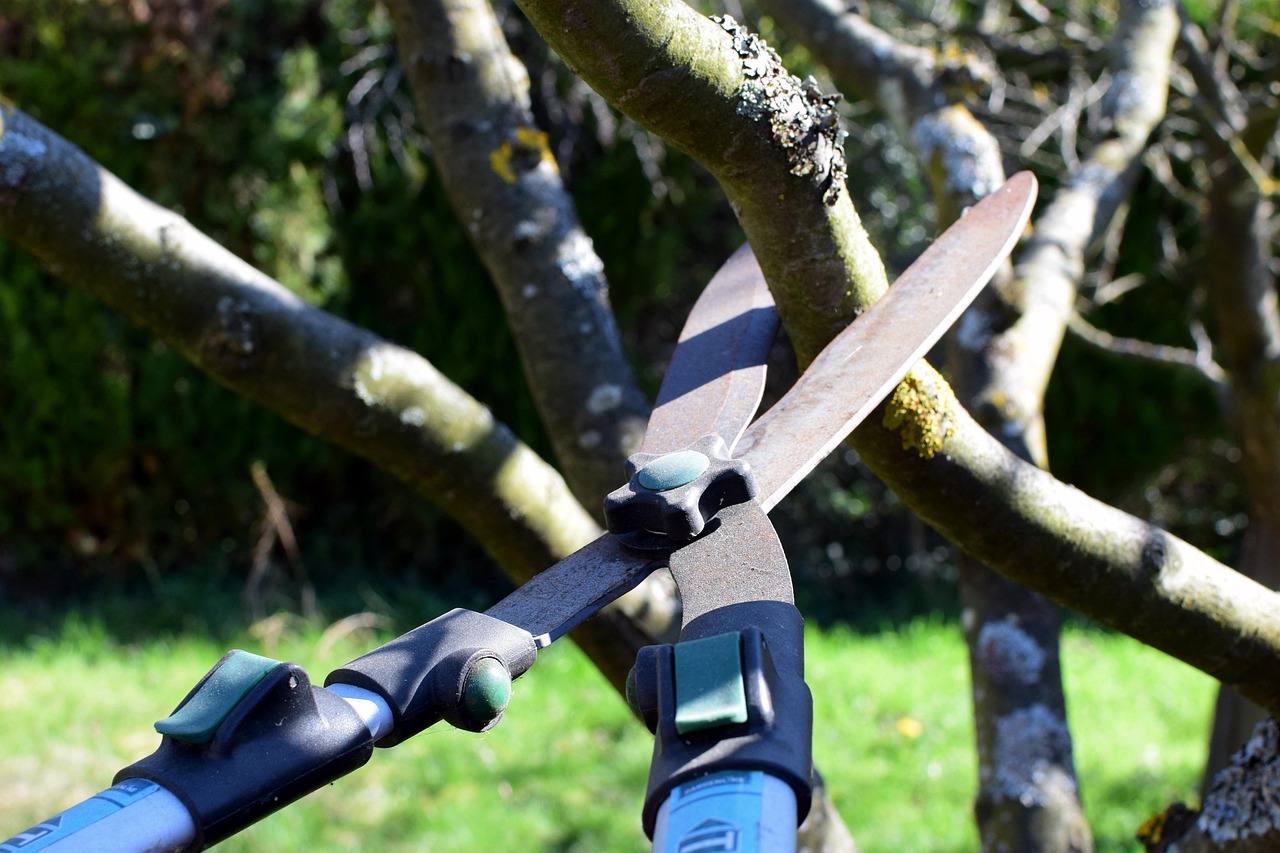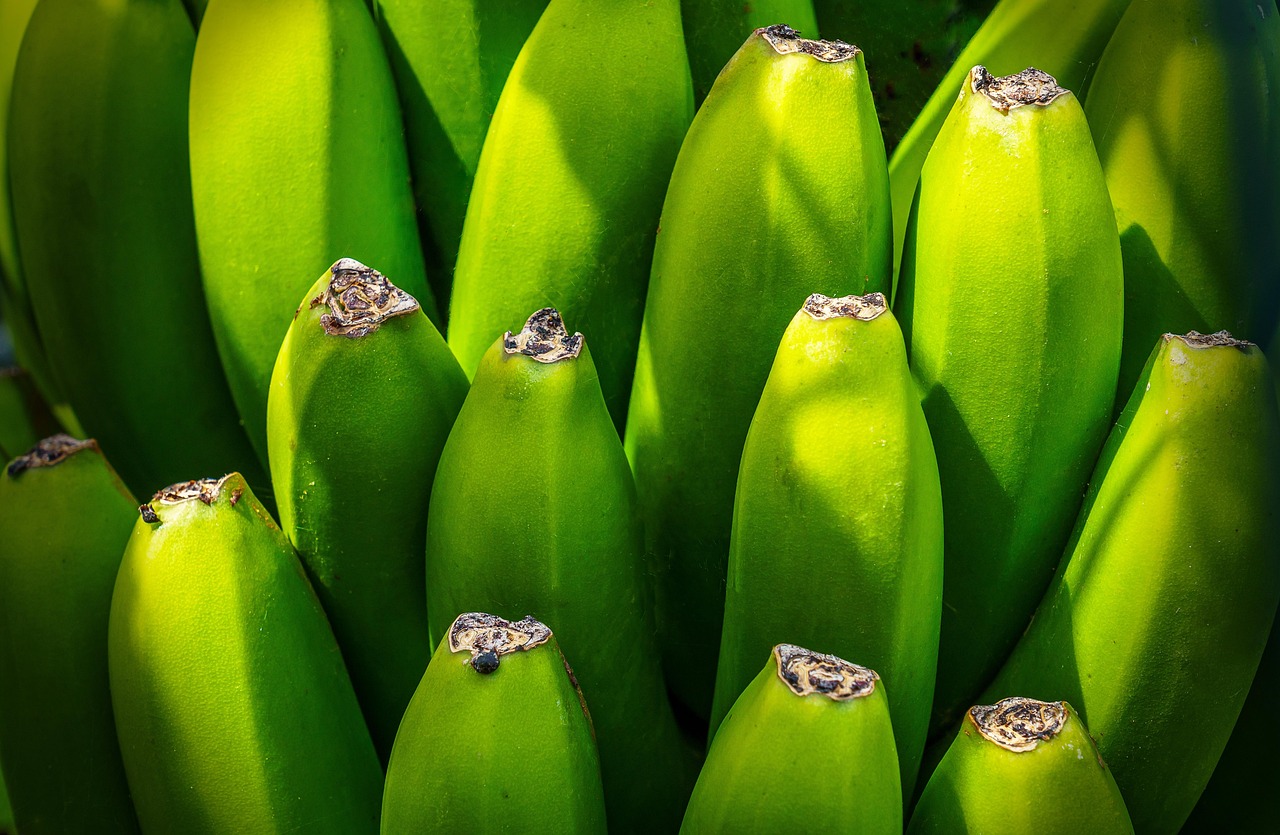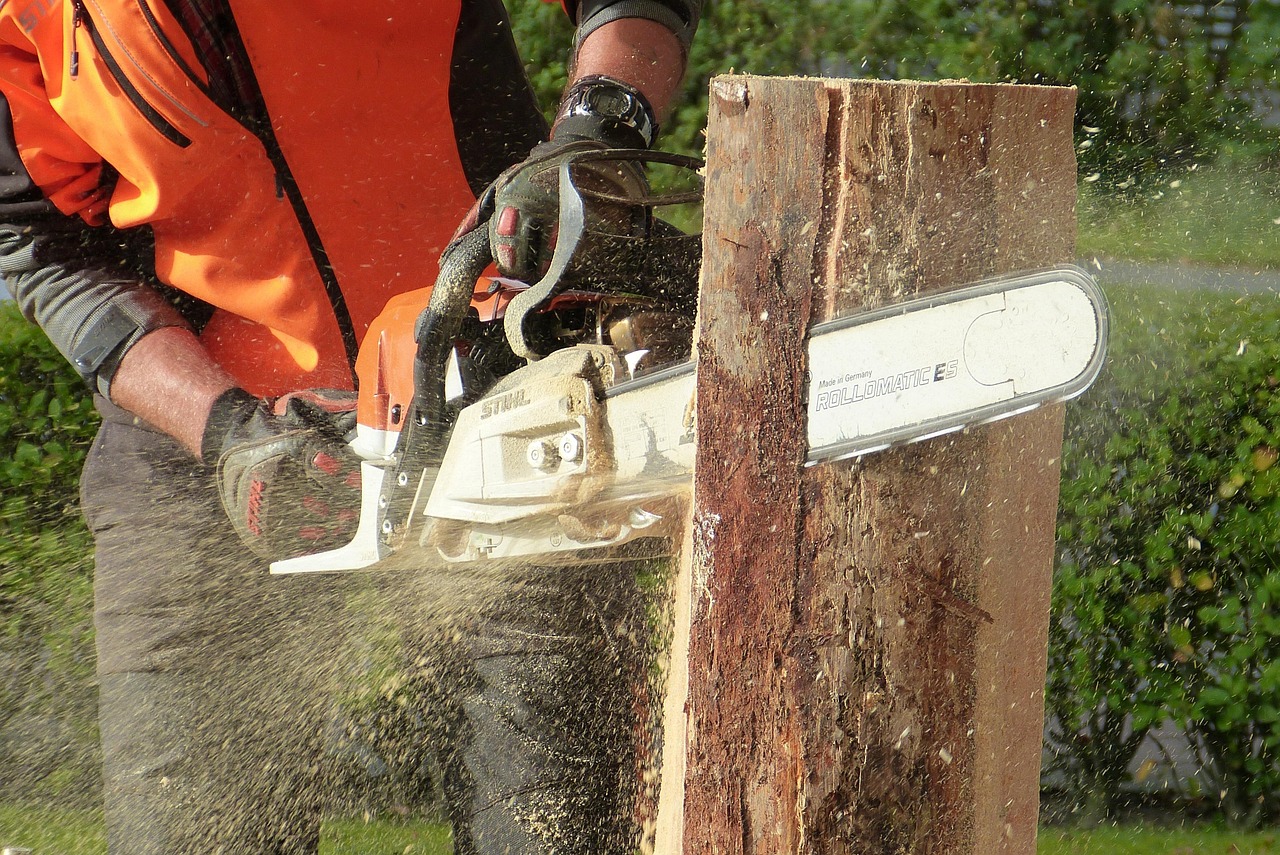Banana tree pruning is essential for promoting healthy growth and maximizing fruit production. Home gardeners should prune banana trees by removing dead leaves, cutting away suckers, and maintaining the overall shape of the plant to ensure proper sunlight and air circulation.
Banana trees are popular among home gardeners for their tropical appeal and delicious fruit. They can grow quite large, reaching heights of up to 30 feet in some varieties. To keep banana trees healthy and productive, regular pruning is necessary. Pruning helps remove old foliage, encourages new growth, and improves fruit quality. Additionally, it can help manage the size of the tree, making it easier to care for.

Understanding the right times and methods for pruning banana trees is crucial for successful gardening. Typically, banana trees should be pruned during the growing season when they are actively producing new leaves. However, some maintenance tasks can be performed year-round. It is important to use clean, sharp tools to prevent disease spread and to ensure clean cuts.
Essential Pruning Techniques
Pruning banana trees involves several key techniques that home gardeners should master. These techniques ensure that trees remain healthy, productive, and visually appealing. Below are the main steps involved in pruning banana trees:
- Remove Dead or Damaged Leaves: Start by inspecting the tree for any dead or damaged leaves. These leaves can harbor pests and diseases. Use clean shears to cut them off at the base.
- Cut Back Suckers: Banana trees produce suckers, or offshoots, which can compete for nutrients. Choose one or two strong suckers to keep and remove the rest.
- Trim Leaves for Airflow: Prune excess leaves to improve air circulation around the plant. This helps prevent fungal diseases and promotes healthy growth.
- Shape the Tree: To maintain a manageable height and shape, trim back any excessively long leaves or stems.
It is also helpful to understand the various types of banana trees, as different varieties may require slightly different pruning approaches. The most common types include:

| Variety | Height | Fruit Size | Special Notes |
|---|---|---|---|
| Dwarf Cavendish | 4-5 feet | Medium | Popular for home gardens; produces sweet bananas. |
| Gros Michel | 10-15 feet | Large | Once the dominant commercial variety; resistant to disease. |
| Red Dacca | 8-12 feet | Medium | Distinctive red skin; sweet flavor. |
| Lady Finger | 6-8 feet | Small | Sweet and soft; ideal for home gardens. |
Pruning not only enhances the tree’s appearance but also helps in managing its health. By regularly performing these tasks, gardeners can create an environment that supports robust growth and plentiful fruit production. It is recommended to wear gloves while pruning to protect your hands from sharp leaves and potential irritants.
Timing is another critical factor in pruning banana trees. The best time to prune is just before the growing season begins in spring. This timing allows the tree to recover quickly and take advantage of the growing conditions. However, if a tree has dead or diseased leaves at any time of year, those should be removed immediately.
After pruning, it is beneficial to apply a balanced fertilizer around the base of the tree. This helps provide essential nutrients that support new growth and enhance fruit quality. Additionally, mulching around the base can help retain moisture and suppress weeds.

In summary, effective banana tree pruning involves careful observation and understanding of each tree’s needs. By following the outlined steps and employing proper techniques, home gardeners can enjoy healthy banana plants that yield abundant fruit year after year.
Common Mistakes in Banana Tree Pruning
Even experienced gardeners can make mistakes when pruning banana trees. Understanding these common pitfalls can help ensure that your pruning efforts are successful. Below are several mistakes to avoid:
- Over-Pruning: Removing too many leaves can weaken the tree. It’s essential to leave sufficient foliage for photosynthesis.
- Improper Timing: Pruning during the wrong season can stress the plant. Always prune just before the active growing season.
- Using Dull Tools: Dull tools can cause ragged cuts, which may lead to disease. Always use sharp, clean shears.
- Neglecting Disease Signs: Failing to remove diseased leaves promptly can spread infections. Be vigilant about inspecting your plants.
- Ignoring Plant Shape: Pruning without considering the natural shape of the tree can lead to an unattractive appearance.
Tools Needed for Effective Pruning
Having the right tools is crucial for successful banana tree pruning. Here is a list of essential tools that every home gardener should have:

- Pruning Shears: For cutting smaller branches and leaves. Look for a pair that feels comfortable in your hand.
- Loppers: These are useful for thicker branches that cannot be cut with standard shears.
- Saw: A small hand saw can help with larger cuts, especially if a branch is particularly thick.
- Gloves: Protect your hands from sharp leaves and potential irritants.
- Disinfectant: Use a bleach solution or rubbing alcohol to sterilize tools before and after pruning to prevent disease spread.
Aftercare Following Pruning
After pruning, it is important to take steps to care for your banana tree to ensure it thrives. Here are some key aftercare practices:
- Watering: Ensure the tree receives adequate water, especially during dry spells. However, avoid overwatering as this can lead to root rot.
- Fertilization: As mentioned earlier, applying a balanced fertilizer can support new growth. Look for fertilizers high in potassium.
- Mulching: Apply a layer of organic mulch around the base of the tree. This helps retain moisture and suppress weeds.
- Pest Control: After pruning, monitor your banana tree for pests like aphids and spider mites. Early detection allows for more effective management.
- Disease Management: Keep an eye out for signs of disease, such as discoloration or wilting leaves. Prompt action can prevent further spread.
Seasonal Considerations for Pruning
Different seasons bring unique challenges and opportunities for banana tree care. Here is a seasonal breakdown of considerations when it comes to pruning:
| Season | Actions | Considerations |
|---|---|---|
| Spring | Primary pruning should occur just before growth starts. | Ensure all dead or damaged leaves are removed to encourage new growth. |
| Summer | Monitor for pests and diseases; minor maintenance pruning may be needed. | Avoid heavy pruning during this time as the tree is actively growing. |
| Fall | Prepare for winter by removing any remaining dead foliage. | This is a good time to assess the overall health of the tree. |
| winter | Avoid pruning during cold months; focus on protecting the plant from frost. | If necessary, remove any damaged limbs but refrain from major cuts. |
The needs of banana trees can vary significantly based on climate and location. Gardeners in warmer regions may find that their trees require different care than those in cooler areas. Adjusting pruning techniques accordingly will help ensure optimal growth and fruit production.
Signs Your Banana Tree Needs Pruning
Knowing when to prune your banana tree is just as important as knowing how to prune it. Here are some signs that indicate it’s time to take action:
- Yellowing Leaves: If many leaves are turning yellow, it may be time to prune away the affected foliage.
- Disease Symptoms: Look for spots, wilting, or any unusual growths on leaves or stems.
- Pest Infestation: If you notice an increase in pests on the tree, pruning may be necessary to remove affected areas.
- Sucker Overgrowth: If suckers are overcrowding the base, it is time to remove some of them to allow better airflow.
- No New Growth: If the tree isn’t producing new leaves or fruit, it may need rejuvenation through pruning.
Caring for banana trees involves ongoing observation and maintenance. By being attentive to these signs, gardeners can ensure that their trees remain healthy and productive throughout their growth cycle.
Best Practices for Pruning Banana Trees
To achieve successful pruning of banana trees, gardeners should follow several best practices. These guidelines help ensure that the trees remain healthy and productive while minimizing stress during the pruning process.
1. Understand the Growth Cycle
Banana trees have a unique growth cycle that home gardeners should understand. Knowing when to prune based on this cycle can enhance the health and productivity of the tree. Here are key points about the growth cycle:
- Active Growth Phase: This occurs during the warmer months. Pruning should be done just before this phase to encourage new growth.
- Flowering Phase: After pruning, the tree will develop flower buds. This is a crucial time to avoid any disturbances to allow fruit development.
- Harvesting Phase: Once bananas mature, you may need to prune away spent leaves to maintain plant health for future cycles.
2. Pruning Techniques for Specific Parts of the Tree
Different parts of the banana tree require specific pruning techniques. Understanding these techniques can help ensure that each part of the plant is appropriately cared for. Here are some tips for each part:
- Leaves: When cutting leaves, make clean cuts close to the base of the leaf stem. This minimizes damage to surrounding healthy tissue.
- Suckers: Choose healthy suckers to keep and remove the weaker ones. Cut suckers at ground level to prevent regrowth from the stump.
- Flower Stalks: After harvesting bananas, prune the flower stalks close to the main stem. This encourages new flower shoots to develop.
3. Safety Considerations During Pruning
Pruning can involve sharp tools and physical activity, so taking safety precautions is essential. Here are some important safety tips:
- Wear Protective Gear: Always wear gloves, long sleeves, and eye protection while pruning to safeguard against cuts and irritants.
- Use Tools Correctly: Familiarize yourself with how to use each tool properly to avoid accidents.
- Maintain Balance: When working on taller trees, use a sturdy ladder and ensure it is stable before climbing.
- Be Mindful of Surroundings: Keep pets and children away while pruning to prevent accidents.
Pest and Disease Management After Pruning
After pruning, it is crucial to manage pests and diseases that may affect banana trees. Proper monitoring and treatment can help maintain plant health. Here are steps for effective management:
1. Regular Inspections
Inspecting your banana trees frequently after pruning can help identify problems early. Look for signs of pests or diseases, such as:
- Discoloration: Yellowing or browning leaves can indicate nutrient deficiencies or disease.
- Pest Presence: Check for pests like aphids or spider mites on new growth.
- Mold or Mildew: Fungal infections can appear as white or gray spots on leaves.
2. Treatment Options
If you notice any issues, consider the following treatment options:
| Pest/Disease | Treatment Method | Frequency |
|---|---|---|
| Aphids | Insecticidal soap or neem oil | Every 7-10 days until resolved |
| Spider Mites | Mite sprays or insecticidal soap | Weekly until control is achieved |
| Fungal Infections | Fungicides or removing affected leaves | As needed based on severity |
| Nutrient Deficiency | Balanced fertilizer application | Every 4-6 weeks during growing season |
3. Organic Pest Control Methods
If you prefer organic methods, consider these options for pest control:
- Companion Planting: Planting marigolds or basil nearby can deter pests naturally.
- Homemade Sprays: A garlic or pepper spray can repel insects effectively.
- Diatomaceous Earth: Sprinkling this natural powder around the base can help control crawling pests.
The Role of Nutrition in Pruning Success
Adequate nutrition plays a vital role in the success of banana tree pruning. Providing the right nutrients will support recovery after pruning and promote healthy growth. Here are some key nutritional considerations:
1. Nutrient Requirements
Banana trees require several essential nutrients for optimal growth. The primary nutrients include:
- Nitrogen (N): Essential for leaf growth and overall plant vigor.
- Phosphorus (P): Important for root development and flowering.
- Potassium (K): Crucial for fruit development and disease resistance.
2. Fertilization Schedule
A regular fertilization schedule can help meet the nutritional needs of your banana trees. Here’s a suggested schedule:
- Early Spring: Apply a balanced fertilizer as new growth begins.
- Late Spring: Reapply fertilizer after the first flush of growth.
- Mid-Summer: Provide additional potassium-rich fertilizer as fruits begin to develop.
- Fall: A final application before winter helps prepare the tree for dormancy.
This nutritional focus, along with proper pruning practices, will contribute to a vibrant and fruitful banana tree garden for home gardeners.
Additional Tips for Successful Banana Tree Care
Beyond pruning and fertilization, there are several other practices that can enhance the health and productivity of banana trees. These tips can help ensure that home gardeners achieve the best results from their banana plants.
1. Watering Techniques
Proper watering is crucial for banana tree health. Here are some effective techniques:
- Deep Watering: Water the tree deeply rather than frequently. This encourages deep root growth and helps the tree access moisture during dry periods.
- Soil Moisture Monitoring: Check the soil moisture regularly. The top inch of soil should be dry before you water again.
- Drip Irrigation: Consider using a drip irrigation system to provide consistent moisture without overwatering.
2. Protecting Against Weather Extremes
Banana trees can be sensitive to extreme weather conditions. Here are ways to protect them:
- Wind Protection: If you live in a windy area, consider planting windbreaks or using stakes to support taller trees.
- Frost Protection: In colder climates, cover the plants with frost cloth during unexpected cold snaps. This will help retain warmth.
- Shade Management: During extremely hot days, providing shade can help prevent leaf scorch.
3. Harvesting Bananas
Knowing when and how to harvest bananas is essential for enjoying the fruit at its best. Here are some harvesting tips:
- Timing: Harvest bananas when they are plump and the fruit has rounded out, typically when they are still green.
- Cuts: Use a sharp knife or shears to cut the entire hand of bananas from the stalk. Avoid pulling on the fruit to prevent damage to the tree.
- Ripening: Allow harvested bananas to ripen at room temperature. They will turn yellow and develop sweetness over time.
Potential Issues and How to Address Them
Even with proper care, banana trees may face various challenges. Understanding these issues and how to manage them is key to successful gardening.
1. Nutrient Deficiencies
Nutrient deficiencies can manifest in various ways, including stunted growth and poor fruit development. Common deficiencies include:
- Nitrogen Deficiency: Causes yellowing of older leaves and poor growth. Address this by applying a nitrogen-rich fertilizer.
- Potassium Deficiency: Results in browning leaf edges and poor fruit quality. A potassium-rich fertilizer can help rectify this issue.
- Magnesium Deficiency: Leads to yellowing between leaf veins. Epsom salt can be used as a magnesium source.
2. Pest Management Strategies
If pests invade your banana trees, it’s important to act swiftly. Here are effective pest management strategies:
- Physical Removal: Hand-picking larger pests like caterpillars can be effective in small gardens.
- Beneficial Insects: Introduce predatory insects such as ladybugs that feed on aphids and other pests.
- Pesticides: As a last resort, consider using organic pesticides that target specific pests without harming beneficial insects.
Final Thoughts
Caring for banana trees involves a combination of proper pruning, nutritional support, pest management, and environmental considerations. By following these guidelines, home gardeners can cultivate healthy, productive banana plants that yield delicious fruit year after year.
The journey of growing banana trees can be incredibly rewarding. With patience and attention to detail, gardeners will find joy in watching their trees thrive and produce abundant fruit. Remember that each tree is unique and may require different care strategies based on its environment and variety. By being observant and adaptable, you can ensure the success of your banana gardening endeavors.
As you continue your gardening journey, keep in mind that learning is an ongoing process. Engaging with local gardening communities or resources can provide valuable insights and support as you refine your skills in caring for banana trees and other plants in your garden.
Your efforts in pruning, fertilizing, watering, and protecting your banana trees will not only enhance their health but also contribute to a fruitful harvest that you can enjoy with family and friends. Happy gardening!
